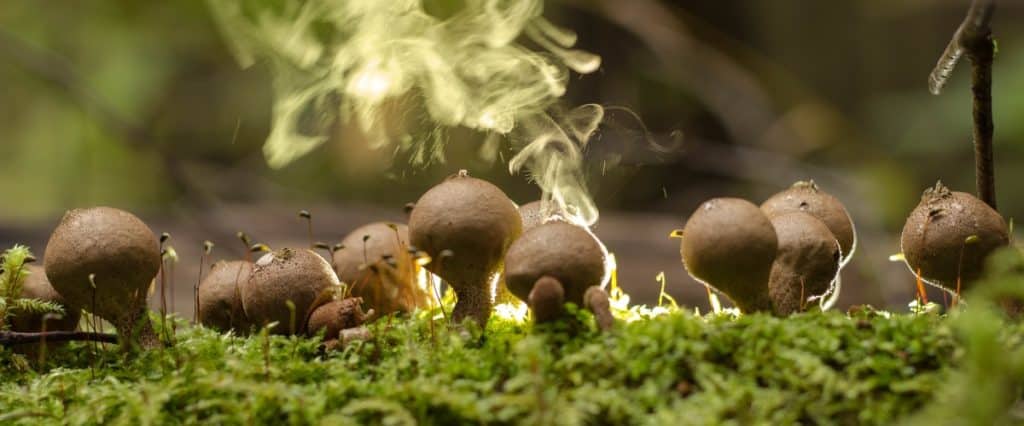The mushrooms that many of us enjoy for their delicious umami taste and health benefits are actually the fruiting bodies of fungi and play an important role in their life cycle.
The mushroom’s purpose is to create and disperse spores. A single mushroom can produce billions of spores a day.
Beginner mushroom growers, who hope to grow mushrooms indoors, often worry about the effects of these mushroom spores in their homes.
But unless you plan on setting up a large-scale mushroom farm in your kitchen, you don’t need to be overly concerned.
Read on to learn more about mushroom spores, where and why they’re produced, how to use them and whether they’re harmful.
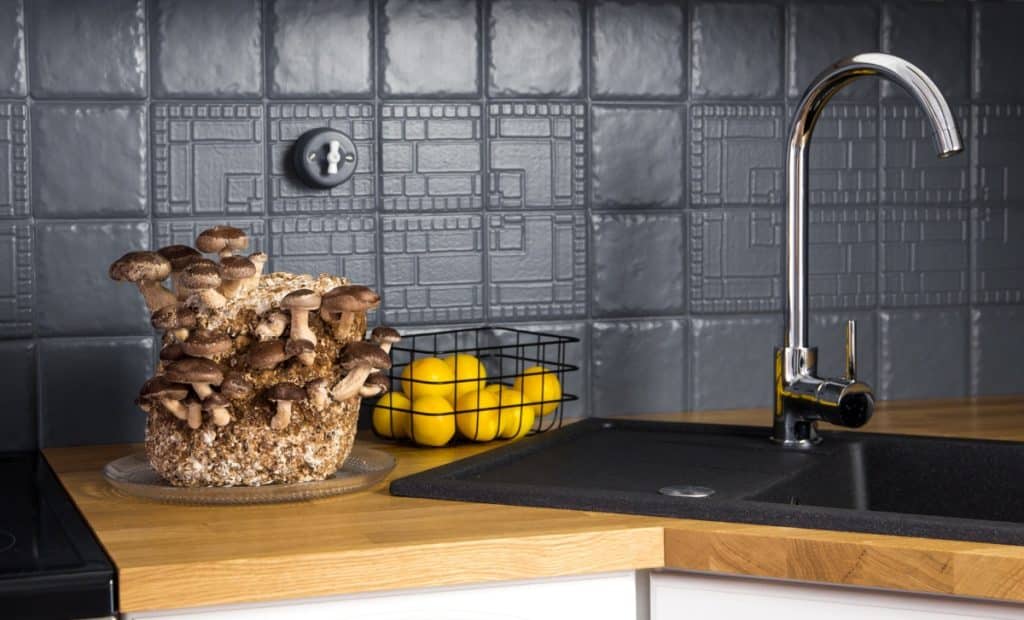
What Are Mushroom Spores?
Mushroom spores are microscopic, single-celled reproductive structures that fungi produce and disperse to reach new food sources.
Spores are often said to be like plant seeds, and their name comes from the Greek word sporā, which means ‘seed.’ But although their purpose is the same, spores are not the same as seeds.
Plants seeds each contain all the genetic material needed to grow a new plant. But mushroom spores only have half the genetic material required to create a new fungus.
Two spores from the same type of fungi must meet and fuse to create a new mushroom-producing fungus.
Another difference is that most plant seeds are visible to the human eye, whereas mushroom spores are tiny dust-like particles whose shape and size are only visible under a microscope.
But when thousands of spores are together, you can see their color with the naked eye, helping with mushroom identification.
Although mushrooms can release billions of spores daily, most will never become a new fungus as they have several obstacles to overcome.
Spores don’t contain much food, so they must land in a spot with a good food source to germinate. Apart from a suitable food source, they also need specific environmental conditions to grow, including the correct temperature range and humidity levels.
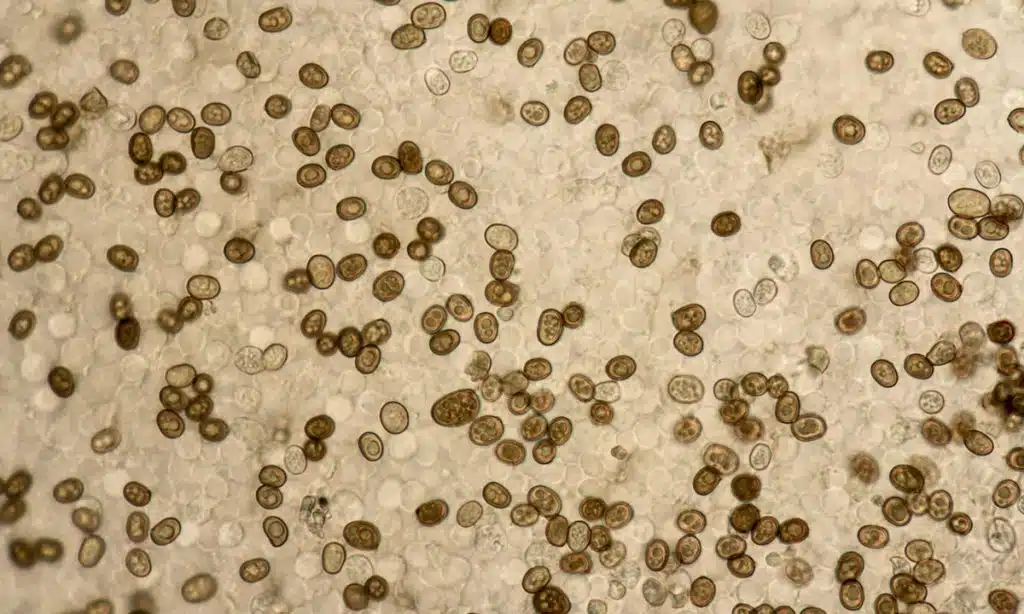
What Are Mushroom Spores Made of?
Mushroom spores vary in size and shape from species to species but are essentially non-motile single cells with a solid cell wall.
Their cell wall has a unique structure containing a complex network of polysaccharides, including glucan, chitin and glycoproteins.
It’s exceptionally tough and protects the spores from extreme environmental conditions, including excessive heat, cold, salt, high or low pH and UV radiation.
Although scientists are constantly studying spores and their cell walls, they’re still relatively unknown, and there’s lots to learn.
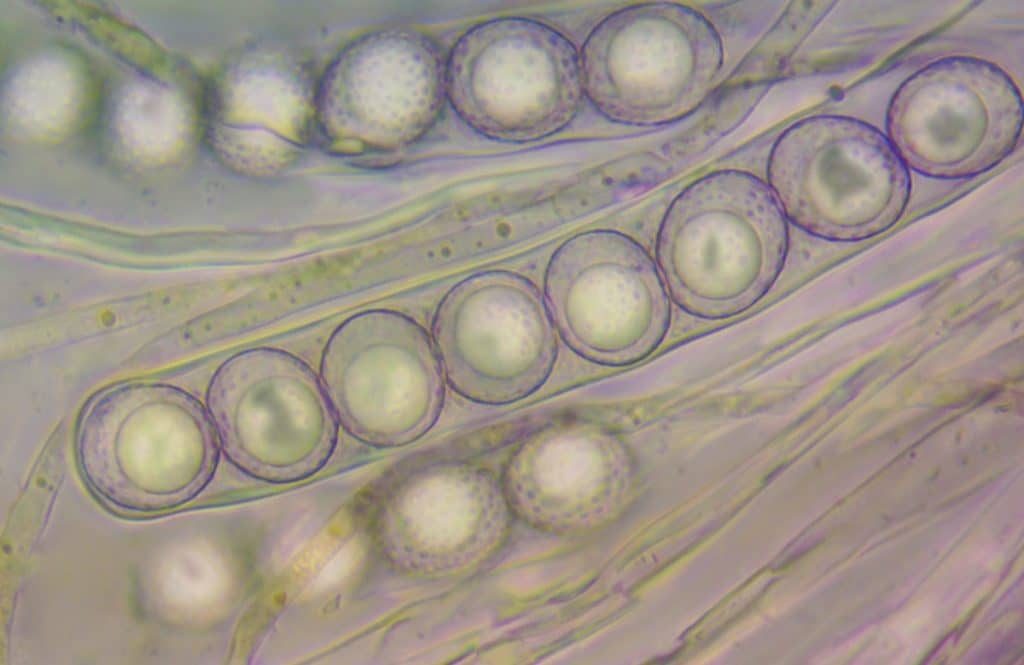
Where Are The Spores of a Mushroom?
Mushrooms, the fruiting bodies of fungi, produce the spores that allow a fungus to spread to new locations and reproduce. They have spore-producing structures or surfaces made up of sporiferous hyphae. These special hyphae produce the spores.
In mushrooms with a cap, you’ll often find the spore-producing surface on the underside of the cap. The cap functions like an umbrella, protecting the structures and spores from rain and excess sunlight.
Spore-producing structures vary from species to species, but some of the most common are gills, pores or teeth.
Many well-known gourmet mushrooms have gills, including button, cremini, portobello, oyster, and shiitake.
Examples of popular mushrooms with pores are sought-after porcini and medicinal mushrooms like reishi and turkey tail.
The most unusual-looking mushrooms of all are the ones that have teeth or needles instead of gills. Examples of these are the shaggy lion’s mane and hedgehog mushrooms.
Although gills, teeth and pores are the most common spore-producing structures, there are mushrooms that produce spores in other ways, including chanterelles, puffballs and morels.
Our article on the parts of a mushroom has more information for you.

Why Do Mushrooms Produce Spores?
The main reason fungi produce spores is to spread and find new food sources, but they also use them to create new strains and ensure the species survives.
Although many fungi can reproduce both asexually and sexually, the new species formed when spores from two different parent fungi combine during sexual reproduction are often more adaptable.
The combined traits from different parent fungi gives them a greater chance of survival in less favorable environments.
One mushroom can release billions of microscopic spores to be dispersed by wind, water, insects or animals. Many of these spores will never germinate, but those that land in a spot with decaying organic material have a chance.
They can remain dormant until environmental conditions are suitable for germination and then produce a thread-like hypha that finds and fuses with an opposite type of mating hypha to form new mycelium.
If you would like to learn more, we have articles to help you understand the mushroom life cycle, where mushrooms come from and how they reproduce.
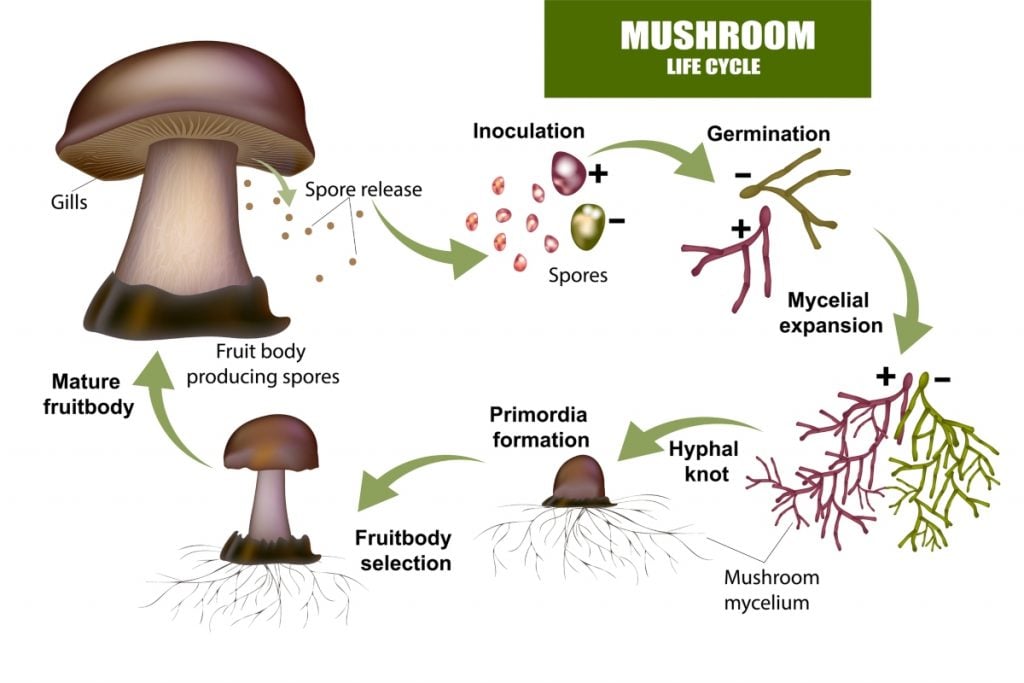
Can Mushroom Spores Harm You?
Generally, mushroom spores will not harm you. When you eat delicious edible mushrooms, you’ll often also eat spores that pass through your system without problems.
The air we breathe also contains numerous small particles, including bacteria, dust, pollen and fungal spores, that are not usually an issue for most people.
But inhaling mushroom spores does cause an allergic reaction in some people, although estimates suggest only a tiny percentage of the general population are allergic to fungal spores.
In small amounts, mushroom spores are generally harmless, but repeated exposure to lots of spores is more dangerous and can cause inflammation and allergic symptoms.
If you’re a mushroom grower, often exposed to large volumes of spores, it’s advisable to wear a respirator. But it’s not usually an issue for growers who have infrequent exposure.
Some mushroom species produce more spores than others. Oyster and shiitake mushrooms are some of these, and it’s best to harvest them before they release their spores.
The ideal point of harvest varies from species to species. But generally it’s best to harvest mushrooms when the caps begin to flatten out but the edges are still curled under.
Our article on harvesting mushrooms has more information on the ideal time to harvest different mushroom species and the video below shows you when it’s best to harvest oyster mushrooms.
What Is a Mushroom Spore Print?
A mushroom spore print is a pattern, usually made on paper, foil or glass. The pattern is produced by thousands of spores dropping straight down from a mushroom’s spore-bearing surface in a draft-free spot.
Researchers make mushroom spore prints on glass slides to study the spores under microscopes and learn more about them. Mycologists usually make mushroom spore prints on foil to harvest spores and grow new or interesting species.
And some people make mushroom spore prints on paper to create art.
Every spore print is unique and beautiful but very fragile. You’ll need to take care when making your spore print, as even the slightest airflow will move the tiny spores and smudge the pattern.
To learn how to make your own spore prints at home, have a look at our step-by-step guide on how to make a mushroom spore print.
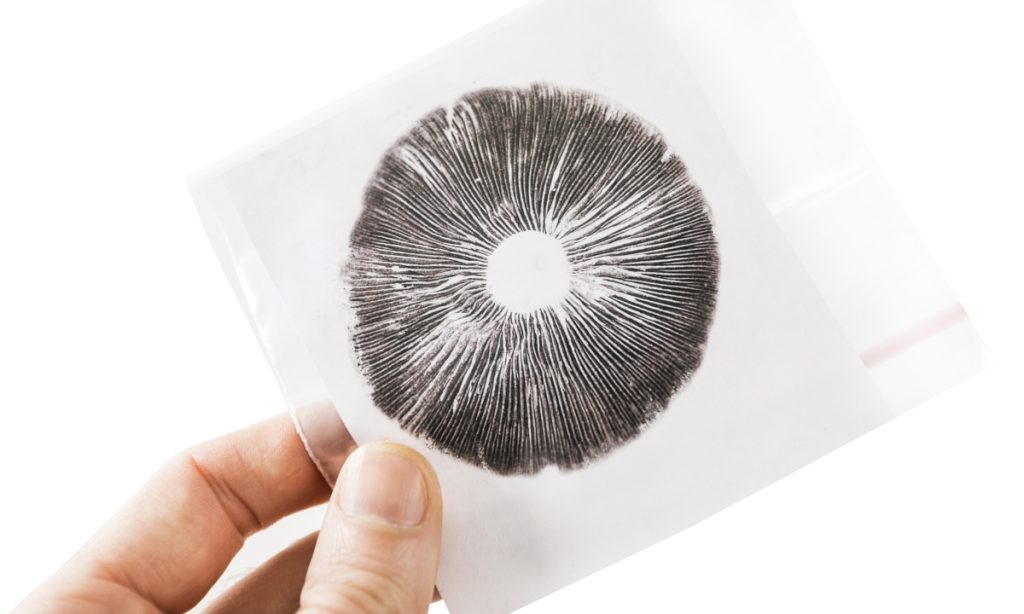
What Are Mushroom Spores Used For?
People generally use mushroom spores for three things:
1. Mushroom Identification
When identifying mushrooms, spores play an important role as they have unique colors, shapes and sizes.
Many foragers use the color of a mature mushroom’s gills, which is usually also the color of the spores, to help with identification. But it’s sometimes best to take the mushroom home and make a mushroom spore print to see the exact color of the spores.
This helps to a point, but several mushroom species have spores the same color. Often the only way to be 100% sure which mushroom species you have is to look at the spores under a microscope.
Most of us don’t own microscopes, so it’s advisable to forage for mushrooms with someone experienced while you learn how to identify edible species.
Mushroom identification apps also help with identification, but never eat a mushroom unless you are 100% sure of its identity.

2. Mushroom Cultivation
You can have some fun and use mushroom spores to grow mushrooms at home with a spore syringe.
A spore syringe is exactly what it sounds like and consists of a syringe containing spores suspended in sterile water. It’s usually used to inoculate sterilized grain to create grain spawn.
Although interesting, growing mushrooms from spores is unpredictable. There’s no guarantee what you’ll get as every time two spores fuse, they create a new strain with new characteristics.
It also takes longer to grow mushrooms from spores as you’re starting right at the beginning of the mushroom’s life cycle. And by adding more steps to the growing process, you’re increasing the chances of something going wrong along the way.
Commercial and small-scale farmers usually grow mushrooms using mushroom culture or spawn containing mycelium cloned from a proven species.

3. Mushroom Spore Print Art
Nature is full of beautiful patterns. Artists have used flowers and leaves to create art for centuries, and now they’re also using mushroom spore prints to create decorative artworks.
If you live in an area with lots of mushrooms, spore print art is a fun project to try at home, and you can experiment with different mushrooms and types of paper.
Just be careful when handling unknown mushrooms, as they could be toxic. Always wear gloves and don’t leave any wild mushrooms where children or pets can get to them.
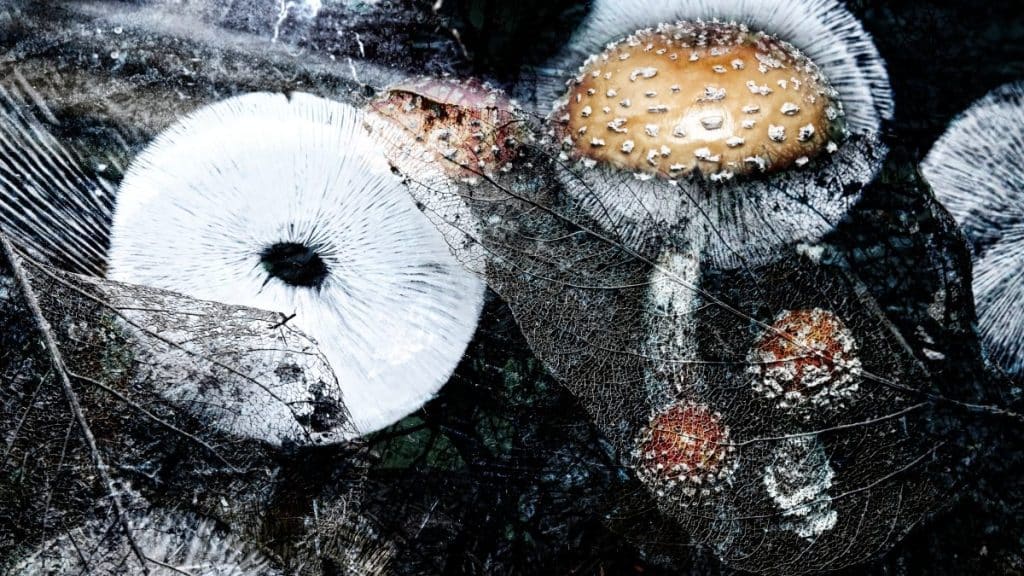
Final Thoughts
We still have a lot to learn about fungi and their spores, and scientists continually make new discoveries as they attempt to understand these remarkable organisms.
In small amounts, fungal spores are not an issue for most people, but mushroom growers, frequently exposed to lots of spores, should wear a respirator to reduce the amount of spores they inhale.
If you’re a small-scale home grower, you can avoid large quantities of spores by harvesting your mushrooms before the spores are released.
To learn more about growing mushrooms, visit our Mushroom Growing Hub or download our free training.
